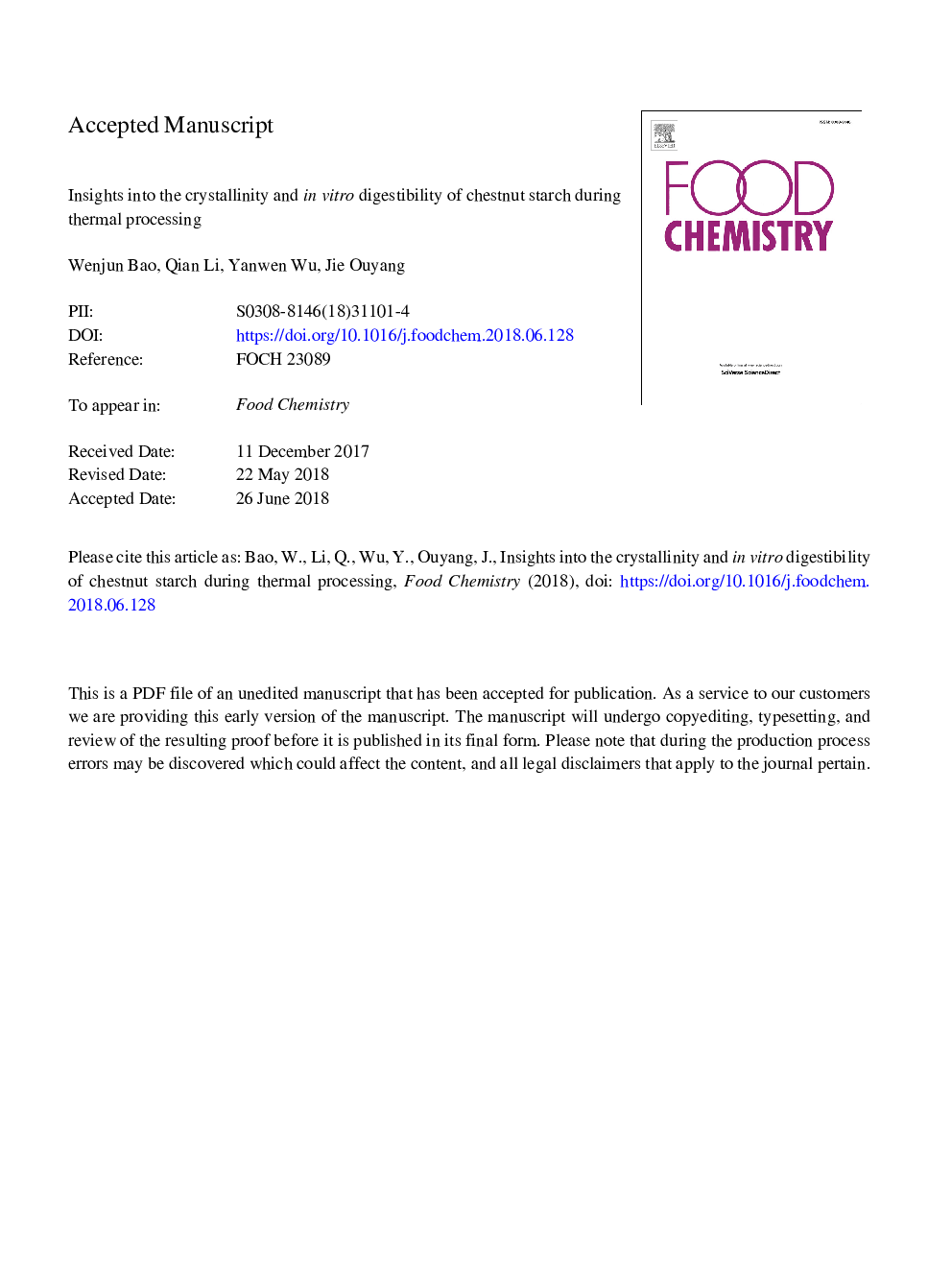| Article ID | Journal | Published Year | Pages | File Type |
|---|---|---|---|---|
| 7584196 | Food Chemistry | 2018 | 35 Pages |
Abstract
The crystallinity is of importance for in vitro digestibility of starch. Six chestnut cultivars were selected to study the relationship between the crystallinity and in vitro digestibility of chestnut starch during thermal processing. After heat treatment, the total starch and amylose content remained unchanged or decreased, but the amount of damaged starch increased significantly (Pâ¯<â¯0.05). Thermal processing enhanced the short-range ordered structure of starch and reduced its relative crystallinity. Thermal processing also decreased the resistant starch (RS) content, but a high RS content (57.2-67.9% of total starch) still remained in cooked chestnut starch. The relative crystallinity was negatively correlated with the estimated glycemic index (eGI) (râ¯=â¯â0.6416), and positively correlated with RS content (râ¯=â¯0.6189). Accordingly, by altering the relative crystallinity and damage degree of chestnut starch, thermal processing changed the overall starch fractions and eGI, which can affect the overall in vitro digestibility.
Related Topics
Physical Sciences and Engineering
Chemistry
Analytical Chemistry
Authors
Wenjun Bao, Qian Li, Yanwen Wu, Jie Ouyang,
